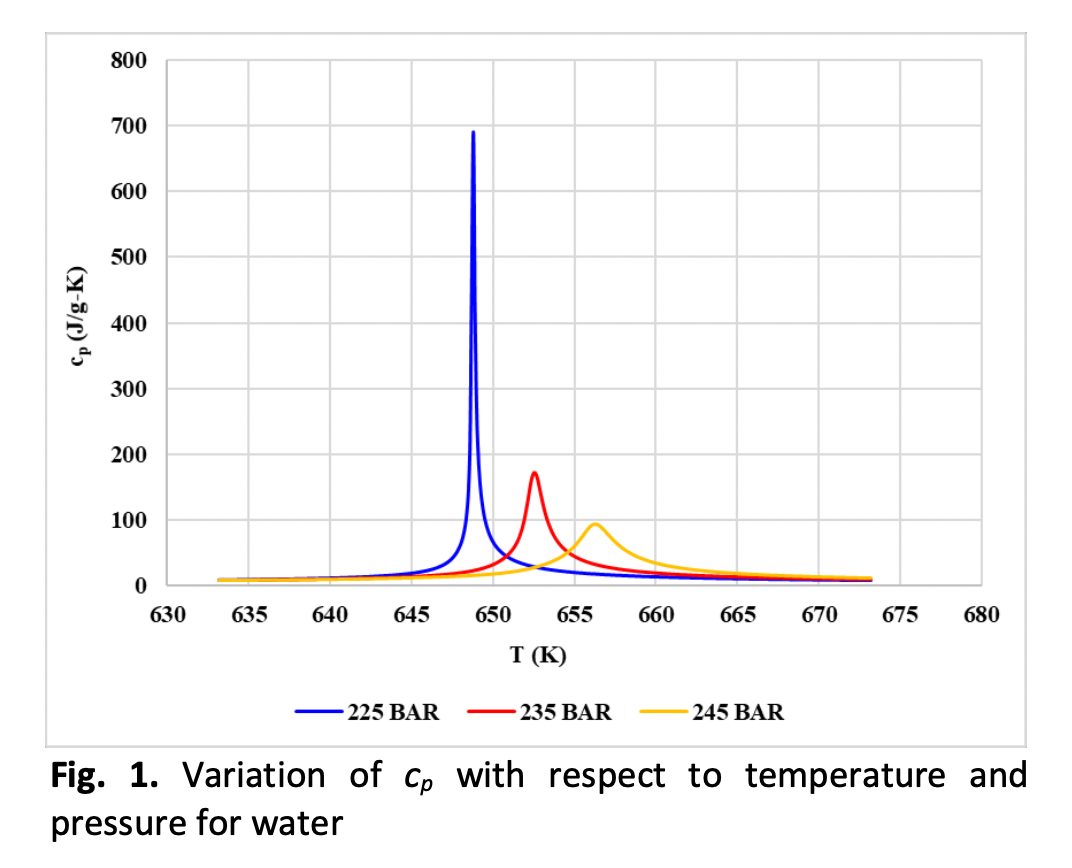Numerical Predictions of Laminar Free and Mixed Convection Heat Transfer to Supercritical Water from a Non-Isothermal Vertical Plate
DOI:
https://doi.org/10.37934/arfmts.106.2.2253Keywords:
Supercritical water, mixed convection, free convection, non-isothermal wall, vertical surface, near-critical fluidAbstract
Numerical predictions of heat transfer have been made for laminar free and mixed convective heat transfer from non-isothermal vertical plane surface to supercritical water. Variation of all the thermo-physical properties of the supercritical fluid under investigation have been considered. The numerical scheme employed in the present investigation is first validated with respect to experimental data for isothermal wall conditions and good agreement is achieved with maximum deviation not exceeding 15 %. Linear and parabolic variation of wall temperatures are considered for the present investigation. Computations are made for two pressures of 225 Bar and 235 Bar, for wide range of temperature difference from 4K to 20K. The values of temperature difference are chosen. Based on the results obtained, correlations have been proposed to evaluate the Nusselt numbers for both free and mixed convection with pressure ratios of P/Pc = 1.02 (p = 225 bar) and P/Pc = 1.065 (p = 235 bar). The correlations cover a range of Rayleigh numbers, Rax from 106 to 109 for Free Convection and grashoff Number/Reynolds Number2 ranging from 0.4 to 8 for Mixed convection. The proposed correlations for local Nusselt numbers do not exceed maximum deviation of 15% from the predicted values. It has been found that the maximum deviation occurs for those cases for which the pseudo-critical temperature, T* is within the boundary layer. It is further observed that for these cases both the velocity and temperature profiles are distorted at locations where the temperature is close to the pseudo-critical temperature thereby affecting the gradients at the wall, which in turn influences the heat transfer coefficient.
Downloads

































